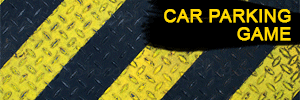Howdoesinternetwork.com receives about 45507 visitors in one month. That could possibly earn $227.54 each month or $7.58 each day. Server of the website is located in the United States. Howdoesinternetwork.com main page was reached and loaded in 0.55 seconds. This is a good result. Try the services listed at the bottom of the page to search for available improvements.
Traffic and Value
| Is howdoesinternetwork.com legit? | |
| Website Value | $4096 |
| Alexa Rank | 540448 |
| Monthly Visits | 45507 |
| Daily Visits | 1517 |
| Monthly Earnings | $227.54 |
| Daily Earnings | $7.58 |
Howdoesinternetwork.com Server Location
Country: United States
Metropolitan Area: Not defined
Postal Reference Code: Not defined
Latitude: 37.751
Longitude: -97.822
Summarized Content
Howdoesinternetwork Main Page Content
| HTML Tag | Content | Informative? |
|---|---|---|
| Title: | How Does Internet Work - We know what is | Could be improved |
| Description: | What is networking, how to configure Cisco or Juniper devices? If you have some similar questions on your mind you are in the right |  |
| H1: | How Does Internet Work | Is it informative enough? |
| H2: | BFD – Sub-second Failure Detection | Is it informative enough? |
| H3: | If there’s no BFD | Is it informative enough? |
We've noticed that you have issues with some content elements on the main page:
• Title contains 51 characters. We think that you could improve this tag by adding more relevant information or keywords.
• Take a look at the headings; there might be too little information. Headings are important for usability and search engine optimization.
Other Helpful Websites and Services for Howdoesinternetwork
Results will appear here |
|
Pingdom - Web transfer-speed test from Pingdom
Run diagnostic transfer-rate tests on each page or individual page components (JS, .img, and HTML code) with Pingdom for howdoesinternetwork.com
Google’s Web Analytics Google provides many analytical tools for the web that will help you find out the number of visitors, their locations and activities when logging onto howdoesinternetwork.com
Alexa - howdoesinternetwork.com on Alexa Traffic Rank Data
Alexa provides a charting service that shows global position by audience, engagement, and time spent on howdoesinternetwork.com
Majestic Backlinks - Lookup other webpages that have hyperlinks leading to howdoesinternetwork.com.
Google Index - Which of the pages is Google.com indexing?
Find out which pages from howdoesinternetwork.com have made it into Google.com’s listings. You can find out with the "site:" query.
Website on this IP by Bing - All sites on the same 2606:4700:30::681c:1d6b IP
View a list of websites with an IP matching that of howdoesinternetwork.com from Bing.com
Internal Pages
| /welcome/: | |
|---|---|
| Title |
How does the internet work - blog about networking |
| Description |
Blog with all articles and config examples about networking in a short informative and fun shape. Compare the same config on Cisco and Juniper devices. |
| H1 |
How Does The Internet Work – Networking Knowledge Project |
| H2 |
How Does Internet Work |
| H3 |
Latest – Most recent 5 |
| /network-fundamentals-intro: | |
|---|---|
| Title |
A whole bunch of great articles at Network Fundamentals: |
| Description |
This part of the webpage introduces the architecture, functions, components, and models of the Internet and other computer networks. |
| H1 |
A whole bunch of great articles at Network Fundamentals: |
| H2 |
How Does Internet Work |
| H3 |
Categories |
| /routing: | |
|---|---|
| Title |
Routing |
| Description |
This part of the site is giving you a overall sight on some of the most interesting parts of routing technology. The process of sending some communication from one network to the other is called routing. |
| H1 |
Routing |
| H2 |
How Does Internet Work |
| H3 |
Let’s start: Routing |
| /ipv6: | |
|---|---|
| Description |
After reading some good material here, there is a big chance that you will be one of the minority of people who can say that the IPv6 is actually simpler than IPv4. Everybody who don't know about IPv6 will surely tell you the opposite. |
| H2 |
How Does Internet Work |
| H3 |
IPv6 articles: |
Similar domain names
howdoesit.nethowdoesitcompare.comhowdoesitcompares.comhowdoesinfraredwork.comhowdoesinfoliocomparetosamsungandiphone.comhowdoesicloudemailbackupwork.comGood morning, Can you tell me what i have been charged for on 10/8/19 amount of $61..90 I believe this could be...
Stop charging my account or police and better business bureau will be notified
I need the money tht you took from my account.. I have no idea of what this site is all about.. Please return my...
Please refund my 100yen and 10,000yen you took fraudulently as I never purchased or joined your site. Please cancel...
Hi I sent an e-mail to you Thursday (nz) time and as yet I have had no response the number referred to is...
Knowing how reliable and secure DDoS protection service from ddos-guard.net, I have updated my plan with them and...
You have charged my credit card for $54.56 please add it back and cancel my subscription card ending 6485




You took 89.95 and 84.95 at the same time from my back account that i didnt authorize and was apparently hacked. I...